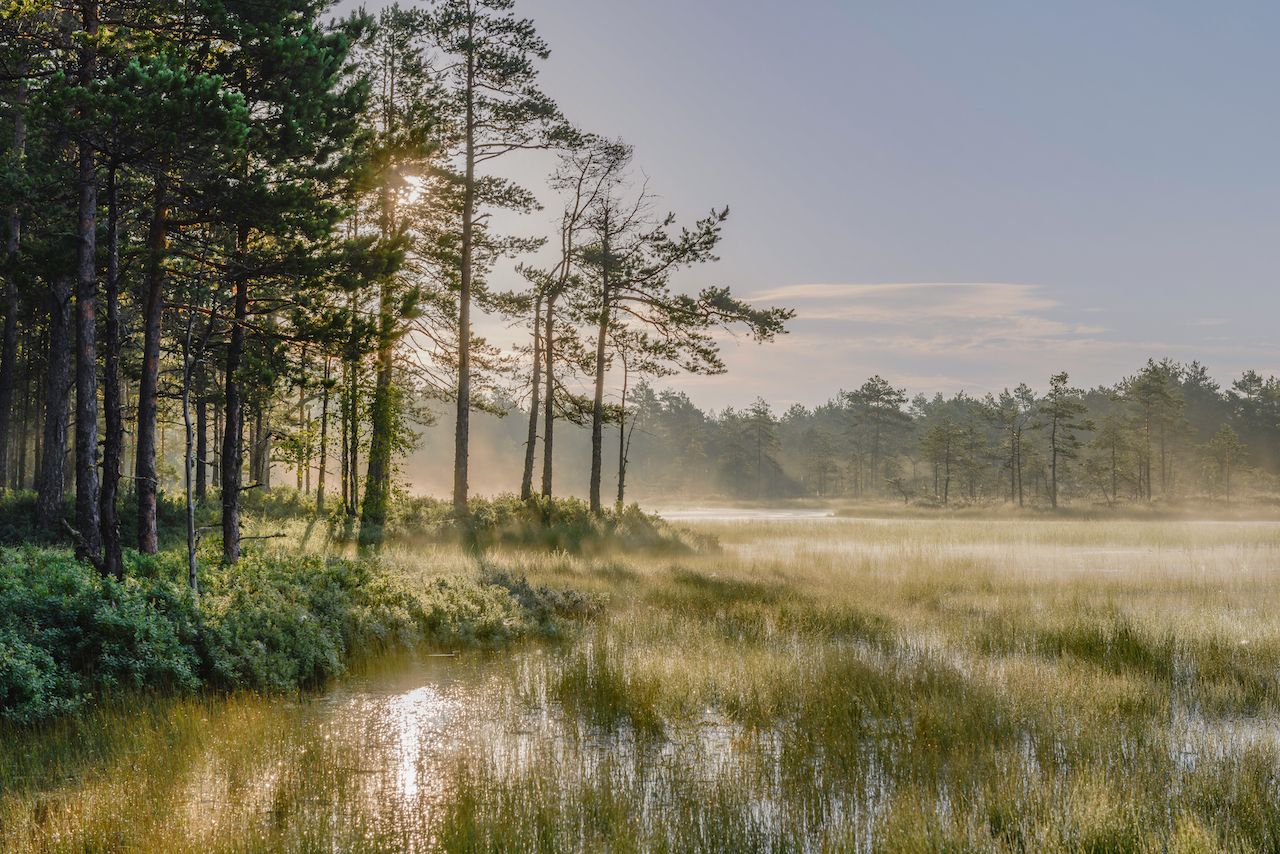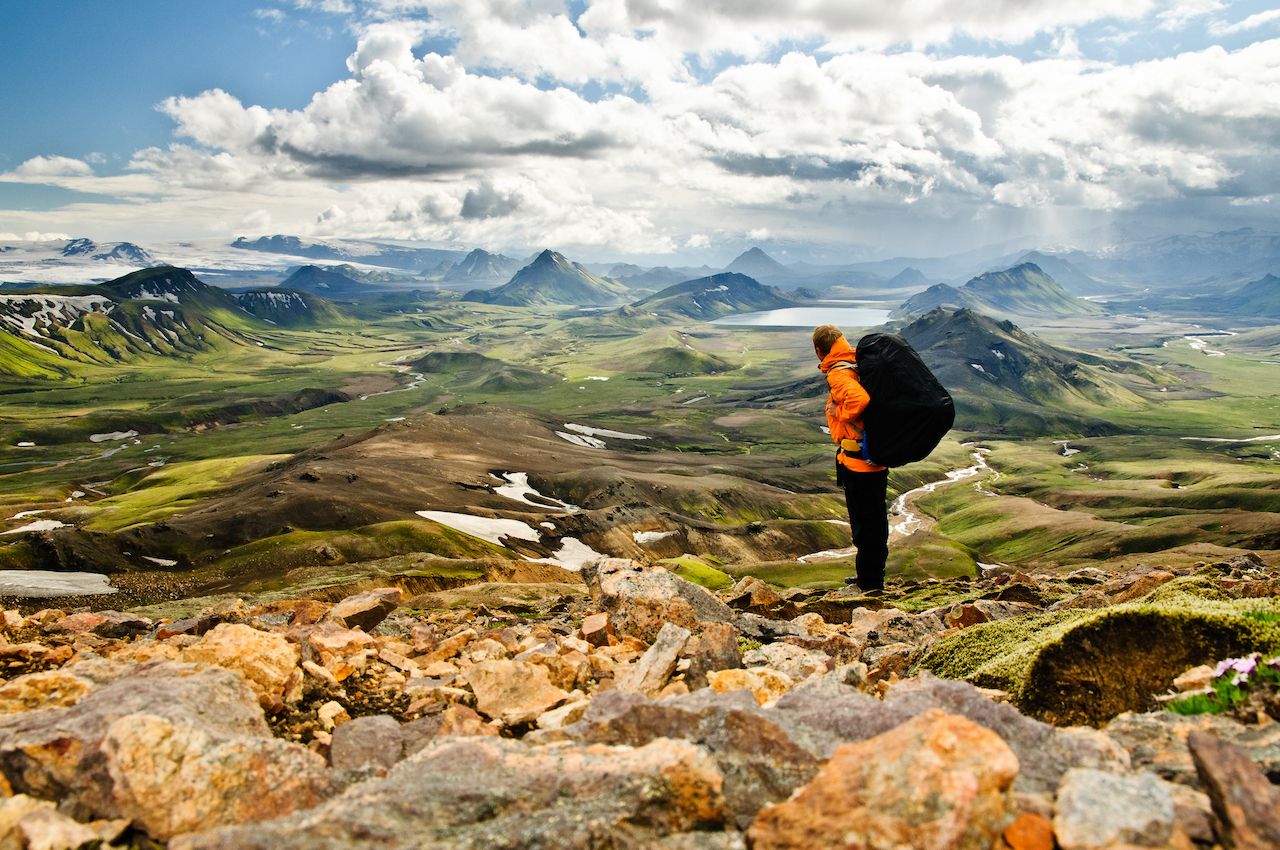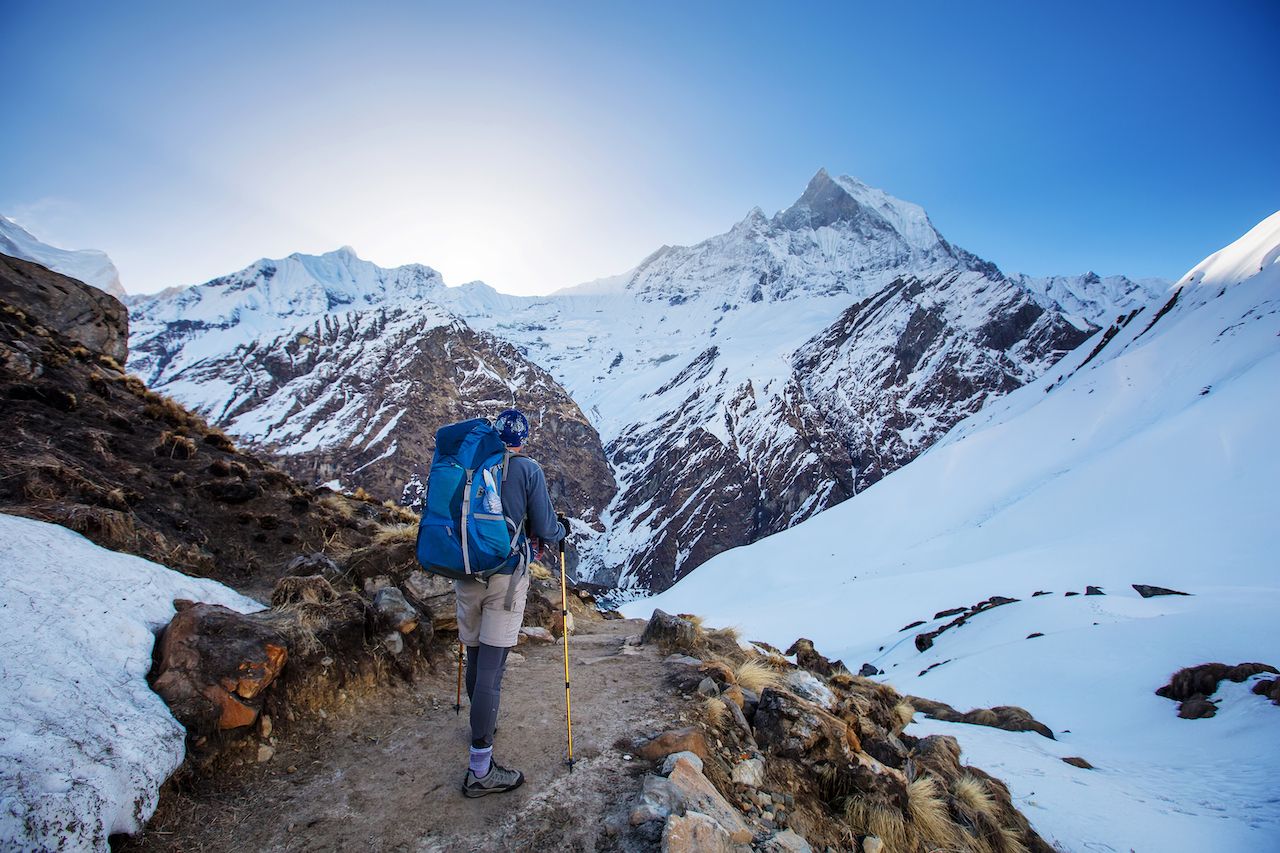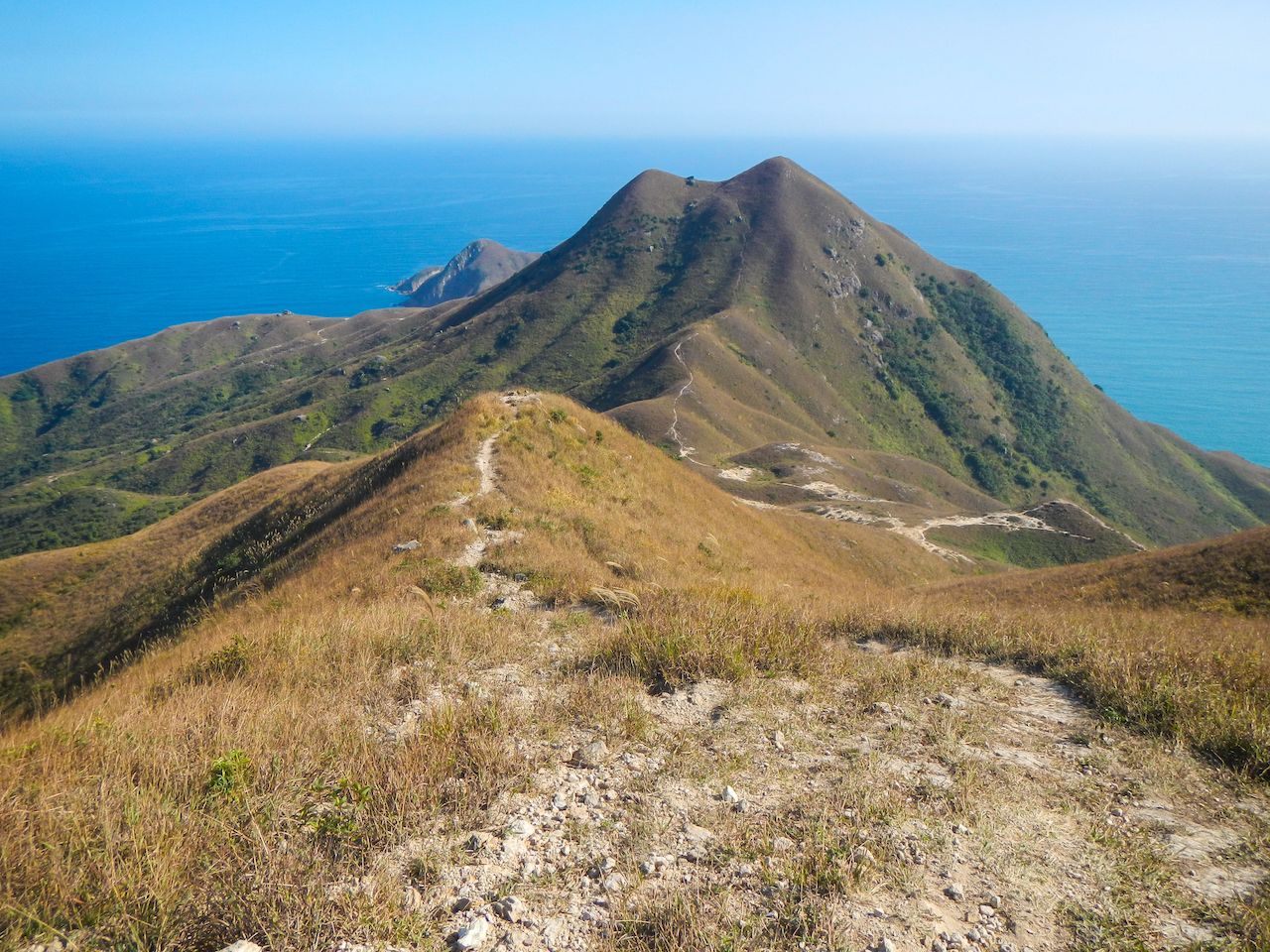For many of us, the urge to get out and explore has never been greater. What better way to do so than on a long-distance trek? Trekking offers the perk of great exercise, unrivaled views, and a chance to fully disconnect from your day-to-day and simply live in the moment while working your way down a trail. Matador sourced the best global thru-hikes for every season from the experts at thruhikes.net. Seasons are noted in relation to the Northern Hemisphere.

The Best Long-Distance Treks in the World for Every Season
The best thru-hikes in spring
Te Araroa, New Zealand

Photo: 4 season backpacking/Shutterstock
Best time to go: October-April
Distance: 1,864 miles
Time needed: 100-200 days
As the snow melts up north, summer turns to fall in the Southern Hemisphere, making it the perfect time for a long-distance trek down south. Te Araroa means “The Long Path” in New Zealand’s native Maori language, and this is indeed the country’s longest hiking route. It’s also the most epic, stretching 1,864 miles from the northern tip of the North Island at Cape Reinga to Bluff on the southern point of the South Island. The varied landscapes of the trek — you’ll pass over forested peaks, hike up and around volcanoes, kiss the coast, and pass through verdant valleys — are unparalleled in New Zealand, rivaling the Pacific Crest Trail in landscape diversity and the Himalayas in “wow” factor.
The trek takes four months of consistent walking, with stops to resupply but not much in the way of formal accommodation en route. Wild camping is the general mode of sleep, so it’s essential to bring gear that you trust to be easy to set up anywhere and versatile enough for varying temperatures and weather patterns. (Expect to actually use that sleeping bag liner.) Head out in April — autumn in the Southern Hemisphere — to tackle part or all of the Te Araroa trail.
Peraküla-Aegviidu-Ähijärve, Estonia

Photo: UrmasHaljaste/Shutterstock
Best time to go: May-October
Distance: 500 miles
Time needed: 27-55 days
While many long-distance treks in the Northern Hemisphere aren’t fully passable until late spring or summer due to snow, Estonia offers trekkers an early opportunity. The best late-spring thru-hike is a doozy, though: the 500+-mile Perakula trek traverses wetlands, coast, and hill country through nine Estonian counties. Working in your favor is the fact that the trek is an established trail that’s well marked and passes through civilization at multiple points.
The newest section from Peraküla to Aegviidu was added in 2015, boosting the length of the trek up to 500 miles from just under 400. Spring is dry, chilly, but mild in Estonia, so the weather shouldn’t be overwhelming. That said, you will have to wild camp — don’t expect cushy yurts or restroom-ready campsites.
The best thru-hikes in summer
The Laugavegur Trail, Iceland

Photo: David Varga/Shutterstock
Best time to go: June-October
Distance: 33 miles
Time needed: 2-4 days
With the midnight sun comes the ability to trek way up north. Iceland’s Laugavegur Trail highlights the best of Icelandic topography, including jagged mountains; milky, glacier-tinted lakes; and eerie fields of hardened black lava. You’ll even have the chance to dip in some hot springs that are blissfully free of the Blue Lagoon crowds. The journey starts near the massive Landmannalaugar peak and finishes at Thorsmork, a peak above a lush green canyon where Frodo would have felt perfectly at home.
The trail is about 33 miles long, doable in two to four days, and camping is done wild-style. When it’s time to sleep, find a location that promises a striking sunset vista over the dark-hued Icelandic high country and you’re all set. After October, the trail is much rougher, so come during mid-summer months for best conditions.
Kungsleden, Sweden

Photo: Yannick.R/Shutterstock
Best time to go: June-September
Distance: 273 miles
Time needed:15-29 days
Outdoor adventurers the world over dream of visiting Lapland in the European north. The Kungsleden trek is the perfect reason to come to Swedish Lapland in summer. You’ll visit four of Sweden’s national parks en route — Abisko, Stora Sjöfallet, Sarek, and Pieljekaise — which lie along the country’s mountainous border with Norway, offering stunning snow-capped views. The trek is 273 miles long, with ample options for breathtaking wild camping spots throughout. Allow three weeks to a month, although some complete the trek in as little as 15 days.
Beginning in Abisko and ending at Hemavan, the trail heads north to south winding around and over mountains, through pine forests and birch woodlands, and alongside dozens of lakes in this glacier-etched terrain. Stay overnight in huts operated by the Swedish Tourist Association, with one section being camp-only. Many huts actually have saunas where you can warm up and then dip in a nearby lake or stream for a proper Nordic spa experience.
The best thru-hikes in fall
The Otter Trail, South Africa

Photo: Five-Birds Photography/Shutterstock
Best time to go: Open all year, their spring for fewer crowds
Distance: 27 miles
Time needed: 1-3 days
A short but rewarding trek through Tsitsikamma National Park and South Africa’s southern coast, the Otter Trail is the country’s original ode to wilderness exploration. You can do this in one overnight or two, working across the 27 miles at your leisure while enjoying the best coastal views offered of any trek on this list. And what a view it is: looking out the unending blue expanse with nothing my ocean between you and Antarctica thousands of miles away. You start at the breathtaking mouth of the aptly named Storms River and work your way west to the stunning pale sand beach of Nature’s Valley. This is a great first-time trek, as the trail is well-marked and trafficked, and you don’t have to climb any massive mountains or spend weeks camping in the wild to make it from start to finish.
The Annapurna Circuit, Nepal

Photo: My Good Images/Shutterstock
Best time to go: September-May
Distance: 130 miles
Time needed: 1-2 weeks
Among the most inspiring things about international trekking is that spending a lot of time on a trail allows you to experience time passing as the clouds soar by the mountains. That experience is surreal on the Annapurna Circuit in Nepal. Here, over the course of one to two weeks, you’ll ascend into the towering Himalaya towards the world’s highest peaks, watching clouds and weather move across them in real-time. Though guided expeditions head out on this trek from September to May, autumn is the best time to see the seasons shift around the alpine, high-altitude desert, and lush forests of the Himalaya.
The trek is 130 miles, and we recommend taking your time to enjoy the scenery and experience the high-mountain culture of Nepal. Wild camping, often less-wild when catered by a guide service, allows you to wake up to the stunning Annapurna Massif and surrounding mountains towering above you each day, as you climb higher and descend down into river valleys between the peaks.
The best thru-hikes in winter
The W Trek at Torre Del Paine, Chile

Photo: Dudarev Mikhail/Shutterstock
Best time to go: November-March
Distance: 46 miles
Time needed: 2-5 days
When snow covers the trails in the Northern Hemisphere’s alpine regions, it’s time to head south — to the southern reaches of the hemisphere. Chile’s Torre Del Paine W Trek runs 46 miles through Torre Del Paine National Park and is among the most iconic trekking journeys in Patagonia and, indeed, all of South America. Tougher days on the trail see upwards of 2,600 feet in elevation gain while easier days are under 1,000 feet, and depending on how long you allot for the trek you’ll generally cover 10-plus miles per day.
Along the route, you’ll pass the Three Towers, Grey Glacier, and the French Valley, three of the most sought-after spots in the park. The trek is one massive loop, ending where it started, which makes logistics easier as there’s no need to shuttle yourself back to the trailhead. But you will need multiple days’ worth of food and water, camping and cooking gear, and clothes suitable for rapidly changing weather conditions. Even in summer, frigid temperatures and precipitation are common in Patagonia.
Guided treks are available through companies like G Adventures, starting at Puerto Natales just outside the national park. Self-guided treks are also doable with a paid entrance fee of about $32, but just know that you are on your own if you head into trouble. Campsites are located en-route, and according to thruhikes.net, wild camping is not permitted. From Santiago, Chile, you can fly into Puerto Natales directly or via Punta Arenas and then take a bus into the park.
The MacLehose Trail, Hong Kong

Photo: mary416/Shutterstock
Best time to go: November-March
Distance: 62 miles
Time needed: 3-7 days
The MacLehose Trail, a 62-mile, three- to seven-day traverse through the hills of Hong Kong, is the toughest trek in south Asia. It’s also the most rewarding — you’ll summit many peaks with expansive views of the Pacific and pass by some of the area’s most beautiful beaches, with literally no one on them. Campsites are available on-site, and though this trail is open year-round, it’s best in winter due to the humid and hot climate of Hong Kong. Even in winter, you’ll sweat quite a bit, but your reward after completing the trek is a bowl of fishballs or stinky tofu in the city. Matador recommends adding a few days to explore Hong Kong after your trek, and be sure to check out the skyline from the Ozone bar at the Ritz-Carlton hotel — the world’s best skyline view. Multiple shorter hikes are also accessible via public transit from the city.